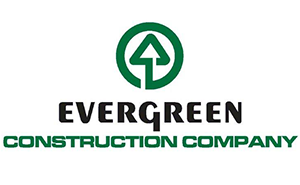
The outsized role that banks play in our financial ecosystem makes it easy to lose sight of the other kinds of financial institutions that serve consumers and communities. These alternative lenders play a crucial role in expanding access to credit, particularly for those low-income, minority and rural communities which are underserved by mainstream banks, and are often called “banking deserts”.
Initiative Captial
Key among these other institutional players are Community Development Financial Institutions (CDFIs). Initiative Capital, NC Community Development Initiative’s lending arm, is one of eight federally certified CDFIs in North Carolina. It is unique for its comprehensive reach across the state, and especially for its focus on affordable housing, community development, and enterprise lending.
For 20 years Initiative Capital and these other CDFIs have been quietly doing the hard work of investing in the low-income communities, communities of color, and rural communities that have not shared in the economic growth experienced by other areas of the state. Access to loans and investment from Initiative Capital and other CDFIs has been critical to the expanding economic opportunity in these areas.
 As an example, Initiative Capital, a growing CDFI with $21 million in assets, has helped to leverage more than $260 million in capital to develop over 3,000 units of affordable housing across the state. Many of North Carolina’s other CDFIs, including Self-Help and Carolina Small Business, can tell similar stories of success.
As an example, Initiative Capital, a growing CDFI with $21 million in assets, has helped to leverage more than $260 million in capital to develop over 3,000 units of affordable housing across the state. Many of North Carolina’s other CDFIs, including Self-Help and Carolina Small Business, can tell similar stories of success.
The CDFI Fund
Given the CDFI sector’s importance in providing capital to struggling communities, the President’s proposed cuts to a key source of support for the
CDFI sector make little sense. With only a few exceptions required by federal law, the Trump Administration’s budget proposes to eliminate all
funding programs operated by the CDFI Fund, an agency of the U.S. Treasury Department. The CDFI Fund provides technical support, as well as equity and other forms of capital to enhance the impact of CDFIs across the country. These public investments are closely monitored and evaluated. Continually, the research shows that investing resources in CDFIs provides solid returns to the public. These are the kind of investments that should be expanded, not defunded.
As American Banker noted, CDFIs are one of three federal programs that are “100% dedicated to delivering responsible, affordable credit options to help low-income, low-wealth and other disadvantaged communities. Often the “nearest CDFI is the only affordable lender in close proximity, especially for those living in rural areas or within Native American communities.”
Over the years, CDFIs have proven that well-managed and well-capitalized alternative financial institutions can fill the gaps for consumers and communities whose needs are not met by traditional banks. Banks themselves recognize this and are often among the strongest supporters of CDFIs, both as investors and in other critical ways.
Working together, CDFIs and traditional financial institutions can help to ensure that all communities, including low-income communities, communities of color, and rural communities, have access to the capital needed to expand economic opportunity. We are confident that the CDFI sector will continue to demonstrate its impact, and we trust that the public will continue to invest in our work – especially through a well-funded CDFI Fund.







